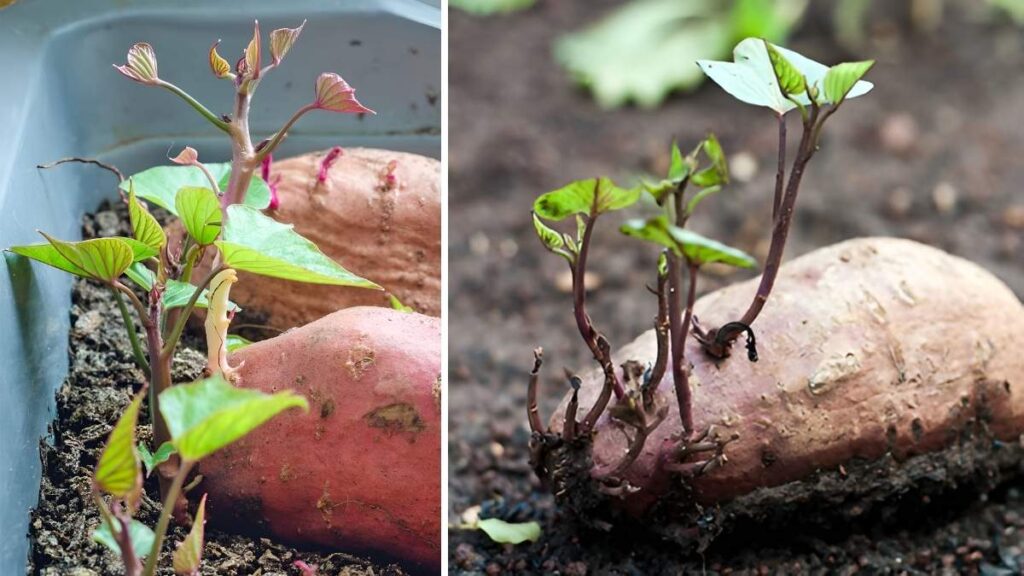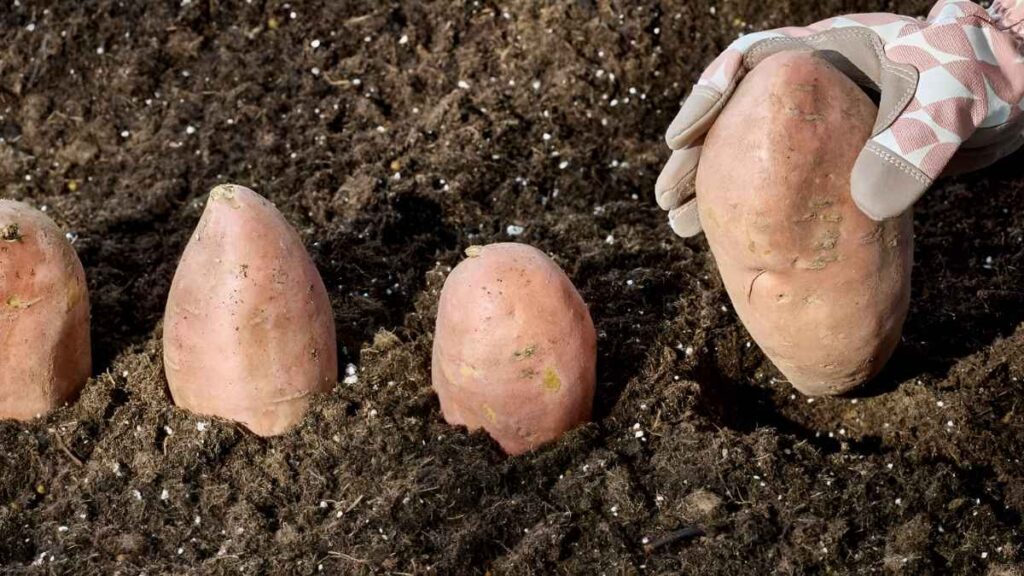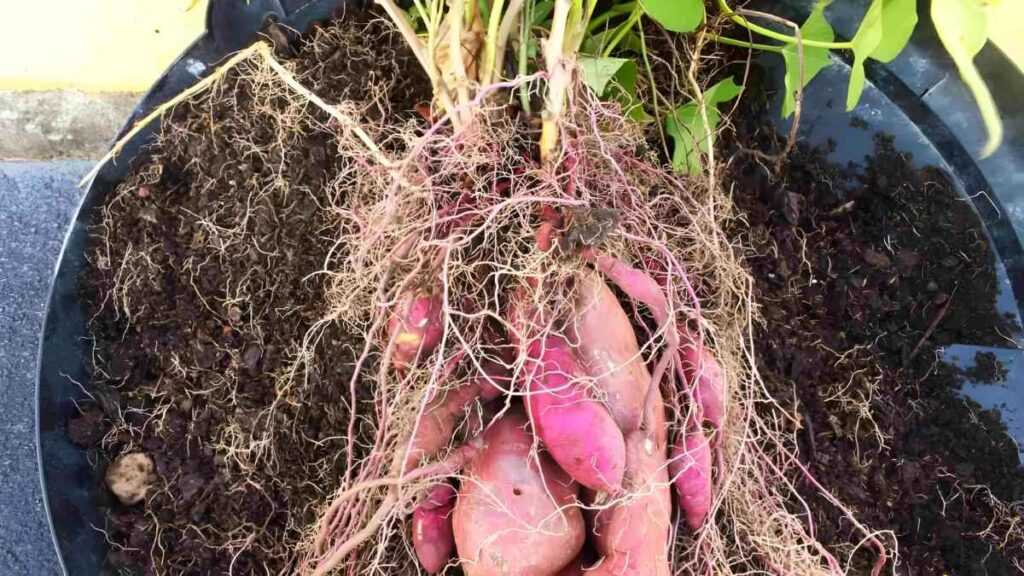Many people think you need a large garden to grow sweet potatoes. But the truth is, you can easily grow them at home even if you live in an apartment or have just a small balcony. Sweet potatoes are easy to grow, and they don’t need a lot of space if you use containers or grow bags. With a little care, you can enjoy fresh, homegrown sweet potatoes right from your own home.
Why Grow Sweet Potatoes at Home?
Sweet potatoes are not only tasty but also packed with nutrients. They are rich in fiber, vitamin A, and antioxidants. Growing your own means you get fresh and organic food without any harmful chemicals. It also saves money and gives you the joy of gardening even if you don’t have much space.
What You Need to Start
You don’t need much to begin growing sweet potatoes at home. Here are the basic things you’ll need:
- A healthy sweet potato
- A large container, grow bag, or even a bucket
- Good quality potting soil
- Water
- Sunlight
Make sure your container is at least 12 inches deep and wide. Sweet potatoes need room to grow underground, so deeper containers are better.
How to Sprout Sweet Potato Slips

You can’t just plant a whole sweet potato into the soil. First, you need to grow slips, which are small sprouts that grow from the sweet potato. Here’s how you can do it:
Take a healthy sweet potato and cut it in half. Place each half in a glass of water with the cut side down and toothpicks on the side to keep it half-submerged. Leave it in a warm and sunny spot like a windowsill. In a week or two, green shoots will start to grow. These are your slips.
Once the slips are 5 to 6 inches long, gently twist them off. Place them in a cup of water. After a few days, they’ll start growing roots. These rooted slips are now ready to be planted.
Choosing the Right Container
Since you don’t have a backyard, containers are your best friend. You can use:
- Large plastic buckets
- Fabric grow bags
- Deep pots
- Recycled tubs or crates
Make sure there are holes at the bottom for drainage. Sweet potatoes don’t like soggy soil. Too much water can cause the roots to rot.
Planting Your Sweet Potato Slips

Fill your container with loose, well-draining soil. You can mix potting soil with compost or coco peat. Avoid using garden soil, which can be too heavy for containers.
Plant each slip about 4 inches deep with the leaves sticking out. Keep at least 10 inches between each slip if your container is big enough. If not, grow just one or two slips per pot.
Water them well after planting. Keep the soil moist but not wet.
Caring for Your Sweet Potato Plant

Sweet potatoes love sunlight. Place your container in a spot where it gets at least 6 hours of direct sun every day. A sunny balcony, terrace, or even a window with lots of light will work.
Water the plants regularly, especially in hot weather. Don’t let the soil dry out completely. But also avoid overwatering. Check the top inch of soil with your finger. If it feels dry, it’s time to water.
Sweet potatoes don’t need much fertilizer. If you’ve added compost to the soil, that should be enough. If you want, you can add a liquid fertilizer once a month.
You’ll notice vines starting to grow and spread. You can let them trail or support them with sticks or trellis if space is tight.
When and How to Harvest

Sweet potatoes usually take about 3 to 4 months to grow. You’ll know it’s time to harvest when the leaves start turning yellow. Stop watering a week before harvesting. This helps the soil dry and makes harvesting easier.
To harvest, gently dig into the soil with your hands. Be careful not to damage the roots. Remove the sweet potatoes and shake off the excess soil. Leave them in a dry, shady place for a few hours to dry.
If you want to store them for longer, cure them by keeping them in a warm and humid place for about 10 days. This helps improve their flavor and shelf life.
Growing Indoors During Winter

If you live in a cold area or want to grow sweet potatoes during winter, you can still do it indoors. Keep the containers near a sunny window and maintain room temperature. Use a grow light if natural light is low. Indoor growing takes a little more care, but it’s very much possible.
Common Problems to Watch Out For
Sweet potatoes are generally low-maintenance, but here are a few things to keep in mind:
- Yellow leaves can mean too much water.
- Stunted growth may be due to poor soil or lack of sunlight.
- Pests like whiteflies or aphids can sometimes appear. Spray a mix of neem oil and water to keep them away.
Enjoy the Fruits of Your Labor
Homegrown sweet potatoes taste better than store-bought ones. Once you harvest your crop, you can roast them, mash them, or even make fries. The best part is, you’ll know they’re chemical-free and fresh.
You can even save a few small ones to grow slips for your next batch.
Final Thoughts
You don’t need a big yard to enjoy the pleasure of growing your own food. With a few containers, some sunlight, and a bit of patience, you can grow delicious sweet potatoes right at home. It’s a simple, rewarding hobby that anyone can try, no matter where you live.
Give it a shot, and you might be surprised at how easy and fun it is to grow your own sweet potatoes.




